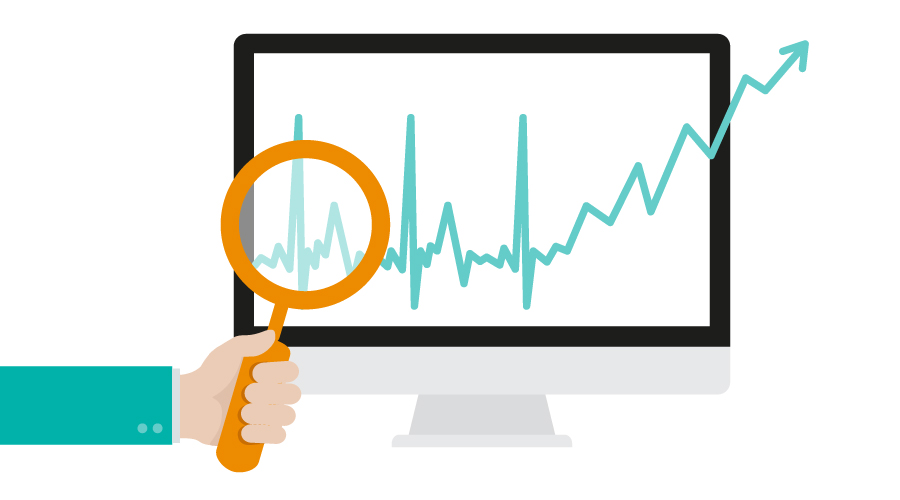business analytics tools
How to Be a Data-Driven Company

We live in a world that’s constantly collecting data. Monitoring systems in cars, Netflix’s Top Picks, road sensors at intersections, customer reward purchases and personalized ads based on Google searches all remind us almost every aspect of our lives relies on data. Likewise, businesses are constantly collecting data such as sales leads, customer orders, requests for information or customer helpdesk calls. By collecting the right data, your company can go from running on instinct to running on solid numbers.; The trick for businesses is to sift through data usually held captive by IT departments, figure out what data is useful and then put that data to good use. That’s where business analytics tools come into place. Last year, Salesforce surveyed over 2,000 business leaders to determine the importance of business analytics, and found that high performers place business analytics at the core of their organization. According to the State of Analytics (2015) study, 90 percent of high performers surveyed by Salesforce say analytics is “absolutely critical” or “very important” to overall business strategy.
Flying by the Seat of Your Pants’ Is No Longer a Business Strategy
Gone are the days of running a department or company based on instinct alone. You can’t just tell a potential investor “trust me” any more than you can tell your CEO, “I don’t know which products are selling, but I think sales are up.” Good data is vital to a company’s well being, and the right business analytics tools help you get the data you need to make the right decisions.
Making decisions based on good information seems like an easy choice, but many companies are hesitant to undertake such a radical change in operations. What they’re missing is the fact that when you identify and collect key data about your company and market, improving your company is that much easier.
Business Analytics Tools Provide the Road Map
Having good data to make good business decisions takes the guesswork out of operations and allows you to focus on concrete ideas proven to improve business. Business analytics tools allow you to capture data and make it useful to your company.
The right kind of good data can improve contacts with prospective sales, prevent customer service disasters, ensure the right amount of inventory is in stock, anticipate trends, pinpoint profitability and bridge design gaps, all actions that will directly improve your bottom line.
Being Data-Driven as Part of an Overall Strategy

Being data-driven is obviously essential, but your company must have a set destination. Business analytics are the tools in your overall business strategy. By clearly defining goals and choosing the right data to measure factors influencing your goals, you can set your company on the path to increasing efficiency and revenue.
Therefore, your company needs an overall goal. Whether it’s to have 90 percent customer retention or close 25 percent more sales this quarter than last, a company goal must be well-defined and well-communicated. Without an overall strategy, the data you gather can be difficult to interpret and even act on.
In other words, a successful, data-driven company needs a clear direction. Using business analytics tools, you’ll be able to identify areas for improvement, new target markets and new opportunities.
Planning Your Destination Determines the Route
To determine your department or company’s overall goal, begin by looking at the big picture. Monitor the health of your company through financial statements. Identify the numbers that are the foundation of your company or department, like orders by month or orders by product. Or, consider sales by geography, sales that fall through, customer complaints, and chargebacks. These seemingly unconnected pieces of data should begin to tell a story.
Because companies experience more success when an entire department or company uses data to make good decisions, the goal needs to be well-communicated throughout the department or company. For example, if customer service can log requests for new features or products, a trend may emerge on which research and development can begin work.
Get Everyone on Board by Sharing the Map
While it may be easy for managers to see the vision of entering contacts, customer notes, and detailed helpdesk or customer service summaries to collect data, lower-paid employees may resent yet another task being added to their workload. It’s important to communicate to all employees that taking extra time to enter information allows the entire company to get a real-time snapshot of operations and the sales pipeline.
Before implementing a business analytics program, it’s important to share the vision with the entire company. Explaining the overall goal, how each department can help achieve the goal and the rewards associated will help each employee feel a sense of ownership in the goals of the company. Data driven companies create a culture accustomed to using data. Top teams are twice as likely than underperformers to create a culture of analytics where at least half of their employees use analytics tools, explains Salesforce’s State of Analytics (2015).
Running Reports Is One Thing, but Running the RIGHT Reports Is Quite Another
It’s not enough just to collect data. Business analytics tools need to make sense for your organization. Many times, the reports a company runs are reports that are easy to run. That is, the reports the company’s enterprise resource planning (ERP) system has available. But that isn’t usually where the most important data is found. Business analytics tools should be customizable to your organization and give detailed insight. Business analytics software like Wave Analytics from Salesforce help your company make smart decisions.
When you look at the reports you run as part of an overall, company-wide strategy to inform very specific goals, your data becomes your chauffeur, driving your company towards its goals.
Selecting Custom Analytics Tools Gives the Data You Need

Making Data Accessible Company-Wide Means Everyone Owns the Outcome
Cloud Business Intelligence (or Cloud BI) is a game changer when it comes to business analytics tools. Formerly, data would sit on one or two on-site computers and be accessible only when the specific employees ran reports. With Cloud BI, the data is accessible across multiple devices.
From upper management to the front lines, having information available on any desktop, laptop, tablet or cell phone allows each member of the company to get the right information at the right time across devices. Freely accessible data allows employees to make real-time decisions and take actions to meet the company customer service, marketing and sales goals.
There’s No Time Like the Present: Gathering Data in Real-Time
Gone are the days to wait until the end of the month for a report. Daily reports on delinquent payments, contacts to be made, follow-ups with customers, trends to take advantage of or customer complaints can prevent problems.
Consider the advantages of seeing a daily report of customers who called the helpdesk. Having customer support follow up with these customers could ensure customer satisfaction and give the opportunity to offer other products based on their type of call. Similarly, seeing the data by customer for number of customer service calls could offer an early signal for identifying dissatisfied customers and allow for corrective actions to be made. Preserving customer relationships is critical to revenue, and the right kind of data allows for pre-emptive actions to be taken.
Three Ways to Use Data: Descriptive, Predictive, and Prescriptive
Your data-driven company will use data in three ways: to describe, predict and prescribe. Descriptive data shows what happened. Total sales by sales rep, total products sold, total time spent on per customer service calls, number of web leads or types of customer complaints are all examples of descriptive data. Descriptive business analytics creates a record in order to inform future practices.
Predictive business analytics use data in the operations of the company. Based on data about sales trends, product popularity, or email and social campaigns, adjustments can be made to forecasting, inventory, production schedules, and human resources.
While descriptive analytics tell what happened and predictive analytics allow for more accurate planning, prescriptive business analytics focus your presents tasks. Using business analytics to create task lists is called prescriptive business analytics. Every employee’s to-do list should be focused on meeting the company’s goal. Data collected should dictate your daily priorities. Predictive analysis allows you to create a task list based on what happened in order to drive company outcomes. Tasks based on prescriptive business analytics might include calling customers who called the help desk yesterday to make sure their concerns were met, offering a product based on queries or following up on web leads.
A data driven company embarks on a journey to a set destination, using data as a careful roadmap to ensure it’s on the right track. Data-driven companies find new opportunities for optimization by discovering stories or trends in the data and acting on those trends. When your company creates a culture of analytics in which front lines to upper management use data to inform practices, your company becomes a data-driven company.

